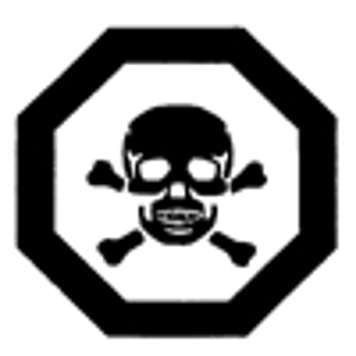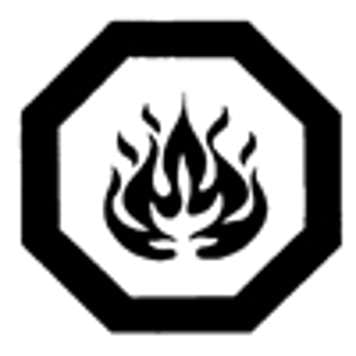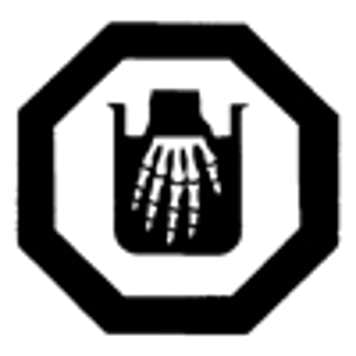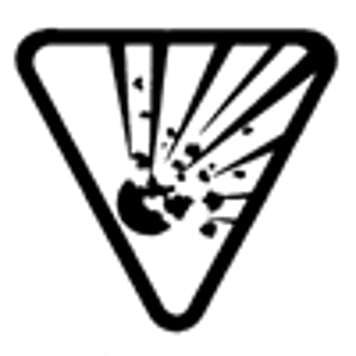Many poisonings that occur in the home can be prevented. Poisonings are most likely to occur in young children less than six years of age, however, keep in mind they can happen at any age. Children are very curious and like to explore and play with medicines and household products. The majority of poisonings happen in your own home.
Remember: poisonings commonly occur when your normal daily routine is disrupted or during times of stress. Be alert and prevent poisonings!
What to do if someone is poisoned
Be very careful not to taste, touch or breathe in the poison yourself. If your child is unconscious, shaking and convulsing, or having trouble breathing or swallowing, call 9-1-1 immediately.
When and how to call 911
Use this video to teach your child how to call 911 from any type of phone and ask for help, as well as when they should and should not call 911.
Why do poisonings happen?
Many poisonings occur because harmful products have not been used or stored properly. Very young children are especially in danger of being poisoned. It only takes a few seconds for a child to swallow a dangerous amount of a poisonous product that is not stored safely. Safe and proper storage of household poisons is extremely important.
Remember:
- Do not take your medicine in front of your children. They may try to copy you.
- Do not give medicine to one child in front of another child.
- Do not call medicine “candy”. Do not make a game out of giving medicine to your child.
- Bad tastes and strong smells will not stop a child from swallowing poisonous products. Medicines, bleach, household cleaners, gasoline, lamp oil and other common household poisons may smell or taste bad, but your child may still swallow it.
- Many poisonings occur when a product is in use. Never leave a child alone with a product or medicine even if it is only "for a second". Take the bottle with you if you have to answer the telephone or a knock at the door.
- Parents often keep bottles of medicine in diaper bags and purses. Curious children can easily access these bottles.
- Harmful fumes can be created when cleaning products and other chemicals are inadvertently mixed together. Be careful not to mix chlorine bleach with other substances!
Storing medicine safely
Make sure all medicine is locked up! A fishing tackle or tool box with a lock works well. Store all of your family's over-the-counter prescription and herbal remedies in the locked box. Get rid of old medicine by taking it back to your local pharmacy for disposal.
Each day, the Ontario Poison Centre is contacted about poisonings because of medicine overdoses. Many overdoses happen because the medicine was not stored safely. Many parents store their family’s medicines in a cupboard that is up high. This storage strategy does not work. Children will climb to very high places to reach hidden medicines. Medicines must be locked up to be safe.
Tips:
- Keep track of how many pills are in a bottle. You can do this by sticking a piece of masking tape on the side of the bottle. Write on the tape how many pills are in the bottle. Each time you take a pill from the bottle, subtract it from the total number of pills.
- For medicines that need to be stored in the fridge, keep inside a plastic container at the back of the fridge.
- Store medicines in original container. Do not mix different medicines, vitamins or other tablets in the same container.
- Try not to keep medicines in a purse or a diaper bag, but if you do, store them out of a child’s reach.
- Remove these items from your cupboard: expired medicine, old-looking or crumbling pills, unused portions of prescription medicine, and unlabeled medicine bottles. Take these items to the pharmacist: they will dispose of them safely.
How to give medicine safely
When giving medicine to someone else, always be sure you are giving them:
- The right medicine: Many pill and medicine bottles look alike. It is easy to grab the wrong bottle if you are not paying attention.
- The right amount: Read the label every time you give a dose of medicine to be sure you are giving the right amount.
- The right person: Mistakes can happen when we least expect it. Busy parents have been known to give medicine to the wrong child!
- The right time: Make sure to ask your doctor or pharmacist when and how often you should be giving the medicine.
Tip: Medicine should be given by the same person each time so that double dosing does not happen.
Lock up your poisons
Keep harmful products locked up in a cupboard or container. There are a variety of safety latches that can be purchased to lock a cupboard or cabinet. Find them in the child safety section of local stores. You should choose one that works for your family and your child.
Store products in their original containerAlways store harmful products in their original containers. Never put a substance in a cup, water bottle or any other drinking container. Products that have been moved into other drinking containers will be mistaken for drinks (for example sports drinks, soft drinks, juice etc.).
Remember that products that have been moved out of their original containers are missing:
- Ingredient information (name and concentration)
- Volume (number of millilitres in a full container)
- Warning symbols
- First aid information
- Other visual cues
Child-resistant containers
Many household products and medicines have specially designed lids that parents think are "child-proof". There is no such thing as a child-proof container. These containers are child-resistant. Child-resistant containers are designed so children cannot open a container easily. Do not rely on the container to keep your child safe.
Keep in mind that these containers are effective in slowing the time it takes your child to open the container. Hopefully, this delay will give you enough time to stop your child from opening the package. Only buy products and chemicals in child-resistant containers. Also, buy the smallest amount needed for immediate use. Try to avoid large bulk-size containers.
Prevention around the house
Plants
- Learn the names of your plants and know which ones are poisonous.
- Keep the tag that comes with new plants so you remember the names.
- Move poisonous plants to places where kids can’t reach them.
Cleaning products
- Do not mix cleaning products together, especially ones that contain bleach.
- Do not leave products unattended. If you’re using a product and called away to the phone/doorbell, bring the product with you.
Storage
- Store all cleaning products out of child’s reach, or install safety latches on your cupboard.
- Store food, medicine and cleaning product in separate areas.
- Double check areas of your home (ex/garage, attic, laundry room, basement) for old/loose products.
Pesticides
- Follow instructions on label carefully.
- Wear personal protective equipment.
- Buy only as much of the product as you need.
Lead
- Homes built before 1960 may contain lead-based paint. This can be a hazard if the paint is chipping or flaking, and within reach of someone who might chew on it.
- Visit Health Canada to learn how to reduce your exposure.
Alcohol and cigarettes
- Don’t forget to empty ashtrays and pour unfinished alcohol drinks down the drain.
Look for these warning symbols
These symbols or pictures are put on the labels of products that are dangerous. You will find them on the labels of many different products that you use in your home. The symbol shows a picture inside a frame. The picture tells you the type of danger.
Be sure to read the labels of all your household products. Learn what each of these symbols mean:

Poison
This symbol means the product could make you or your child very sick or even die if it is swallowed or licked. Some products with this symbol can cause you or your child harm if they are breathed in.

Flammable
This symbol means the product can catch fire easily. Keep this product away from heat, flames and sparks.

Corrosive
This symbol means the product can burn skin or the eyes. If it is swallowed, it will also burn the throat and stomach.

Explosive
This symbol means the product container will explode if it is heated or punctured. If this happens, metal or plastic can fly out of the container.
